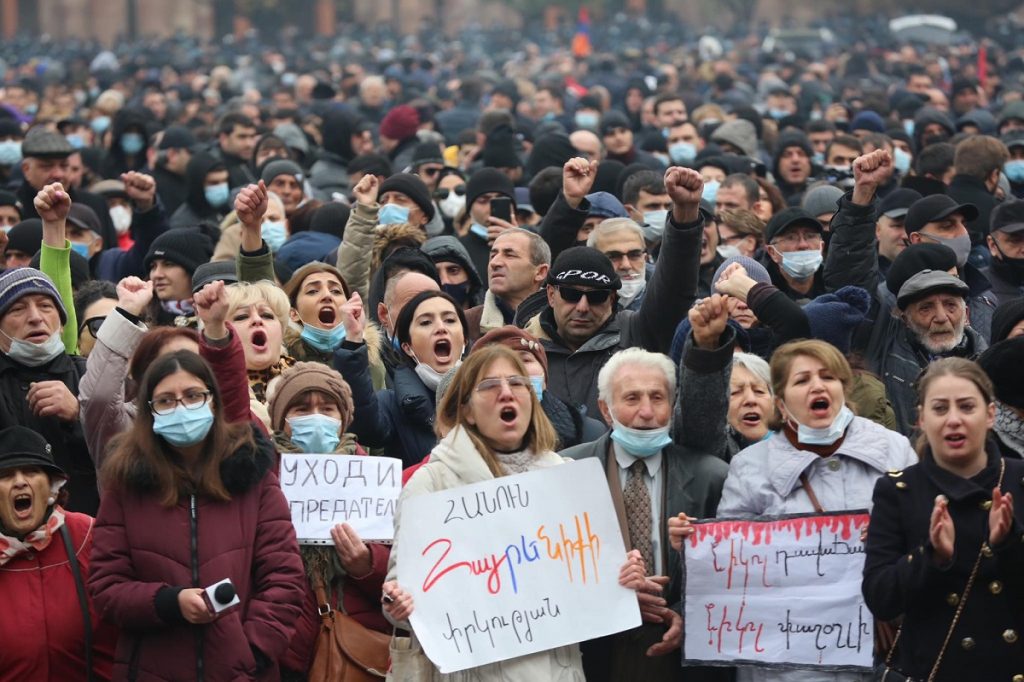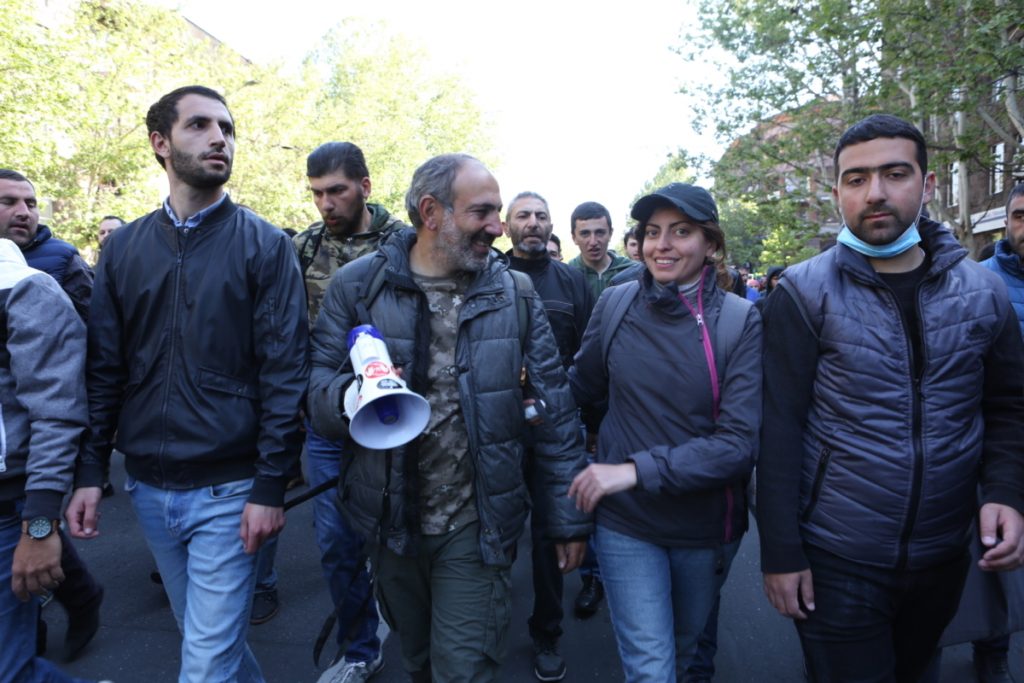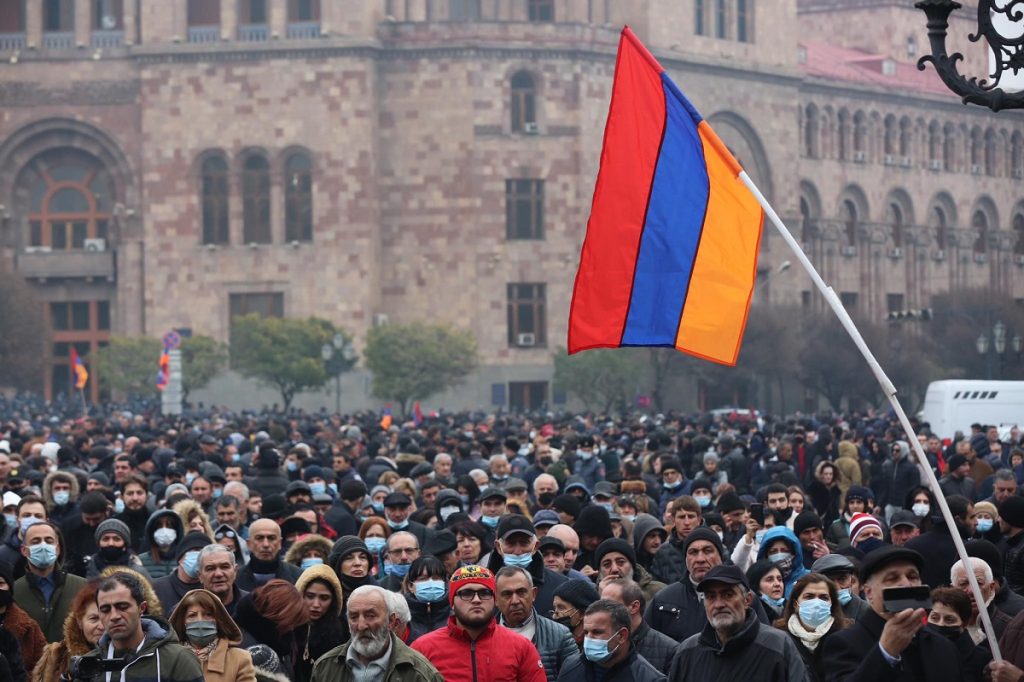Reboot – Armenia’s only way out of the political crisis?
The ongoing political crisis in Armenia is becoming more and more acute.
Many find themselves in a state of apathy and disappointment; what is the way out of the political crisis?
Analysis from the director of the Caucasus Institute, political scientist Alexander Iskandaryan.
- Armenian opposition, gov’t begin negotiations
- Who’s tampering with the Karabakh agreement? Differing opinions in Azerbaijan, Armenia
Polarized society
The political crisis in Armenia began in the fall of 2020 caused by the ceasefire agreement that put an end to the second Karabakh war. The peace agreement was considered unfavorable for Armenia and the country’s opposition has since been demanding the resignation of Prime Minister Pashinyan who signed it.

The crisis continues, causing new contradictions to emerge. The latest outrage was caused by PM Pashinyan’s interview where he described the Russian Iskander missile system, which is the pride of the Russian military-industrial complex, as one “of poor quality”.
Such outbursts and contradictions could go on for years due to the split existing in the country between the opposition and the ruling party.
The opposition itself is also quite divided and it is not a homogeneous group. Similarly, the ruling party is also comprised of both the government and the General Staff of the Armed Forces, which is hardly normal.
Military experts and revolutionaries
Revolutions, in principle, mean that people who have never been in politics before or have only been involved in single-issue politics (e.g protest politics), come to power. It rarely happens that revolutionaries have already formed hierarchies, structures, bureaucratic apparatus, and fully-fledged political parties.
In reality, the revolution of 2018 in Armenia was carried out by several dozen people. Since coming to power, they went on to recruit people more or less randomly. However, at the same time, it was necessary to work and manage various structures meaning that experienced professionals were needed.
Then there were specialists whose professional training was necessary for areas which the revolutionaries found especially hard to manage, including the military. It is difficult to appoint a revolutionary instead of a general, especially when you have an ongoing conflict to resolve.
That’s when contradictions begin to surface. People have different biographies, different ways of coming into politics. Their ideas about how to build a state begin to collide. This problem existed before the war but it was deliberately hidden from the public.
There were dismissals, promotions, distribution of awards, defections to the opposition, various speeches and movements within the army, yet none of that ever surfaced to the public eye.
What triggers the contradictions?
After the war, when relations between the military and the political elite became extremely complicated, they began to blame each other. The generals accuse the government authorities of intervening in the conduct of the war on the tactical level.
In turn, the government claims that the war is lost, because, under the leadership of ex-President Serzh Sargsyan, the wrong weapons were bought at the wrong prices, and the corrupt army leadership did not develop a sufficiently coherent military strategy.
The trigger in the form of interviews and statements happened before the public’s eye and now it needs to be sorted out. Someone will be fired, someone will be given something but the contradictions will not disappear.
The military staff who signed the open letter calling for Pashinyan’s resignation will remain in their posts, one cannot fire them all and the political elite will be left with resentment.

That’s where we are all standing right now, and, from time to time, we need to expect some triggers as well as certain contradictions to reoccur.
Overcoming difficulties and hardships is a normal and necessary component of any state-building. Great Britain of the 17th century, for example, looked more like modern Afghanistan than modern-day Great Britain.
The question is, does Armenia have time for such a process? After all, Armenia is not some gigantic state located on some island. Armenia has some very specific neighbors, which is a serious problem, it is quite problematic to sit and wait for the state to form by itself.
- ‘Armenia without Nikol’: opposition resumes protests in Yerevan
- Moscow bites back after Armenian PM claims Russia’s Iskander missiles ‘don’t explode’
Armenia needs a restart
We need to work, work, and work. We need to gather a group of officials and experts, not based on their loyalties, but on their competence.
We need to build a party system. A parliamentary country cannot live without political parties. Our system is based on multi-party politics yet we do not have a single real political party in the country. Everything that we now call a political party is actually the furthest thing from it.
It is necessary to centralize and institutionalize the process of making rational decisions and mobilize society in order to start rebuilding our state.

Stages of Armenian state-building
1.
From 1988 to the mid-1990s, the idea and foundation of the Armenian state were centered around Karabakh. It was the pivot on which the construction of Armenia was based.
Various army detachments appeared before the state. Political parties were formed in the struggle for Karabakh. Territorial administration, as well as the economy, were formed in order to manage and facilitate military operations. The Karabakh issue became the center of the country’s diplomacy.
2.
From the mid-1990s to 2018, Armenia’s main idea was to “survive until the next paycheck”, merely to continue to exist, and enjoy some small victories along the way.
This happened because society cannot remain mobilized all the time, especially since after the victory in the war everyone relaxed, people began to want things that were very natural: food, amenities, clothing, better income.
3.
Then came the period when Armenia tried to solve complex problems with a simple method: we will have a revolution, and everything will be fine. Let’s replace the bad people with good ones, and everyone will be happy. After the revolution, people thought that there would be no security cameras on the roads, banks would not take interest on loans, oligarchs would return the loot, etc.
4.
Now Armenia is faced with a period of stagnation. The old order is dead and the new has not yet been born. New ideas are possible, including the reintroduction of Karabakh as the central national idea.

Society demanding competence
In the 1990s, the social demand was for intelligence, and the polyglot Levon Ter-Petrosyan came to power. The next request was for toughness and endurance – Robert Kocharian, who had gone through the war, came to office. Then there was a request for consensus – the diplomatic Serzh Sargsyan came to prominence. Then the request was for honesty and the revolutionary Nikol Pashinyan appeared.
When society requests competence, it is no longer about being exceptionally honest and good, but rather about being a professional in one’s sphere, that’s when then there can be hope that the country can be reformed.
Now we are returning to the stage of the late Republicans: weak government, weak opposition, and negative development program. It was “Reject Serzh” before, now it is “Reject Nikol”.
Nikol will be replaced, but the problems will remain. There is a lot of hard work ahead.
We must work, and not think that it is possible to change the situation with one simple step, replacement of one person, or even tens or hundreds of people in power.
We need to change our views. Society must understand that it cannot go out to the streets, stand there for ten days and suddenly wake up in a country like Switzerland. It is necessary for each of us to work and make changes where we can. I’m afraid it won’t happen quickly and it may take generations.



















